
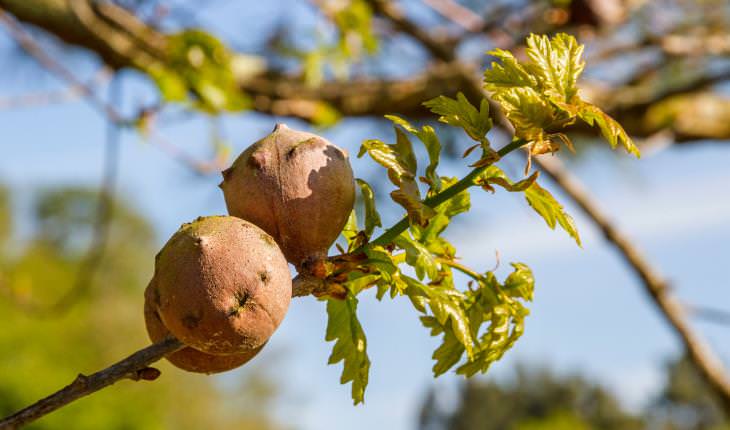
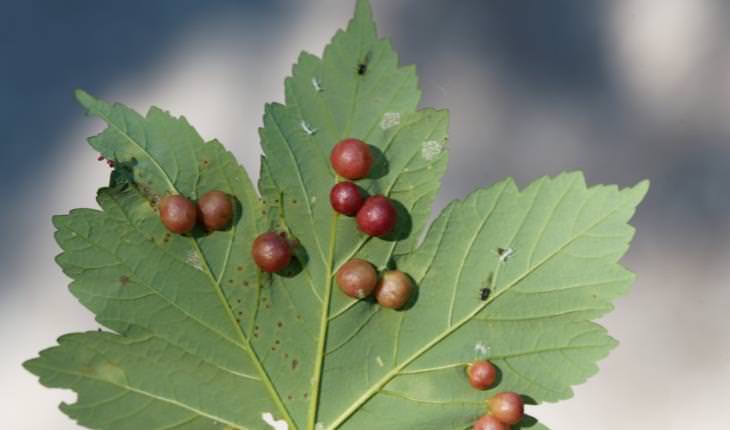
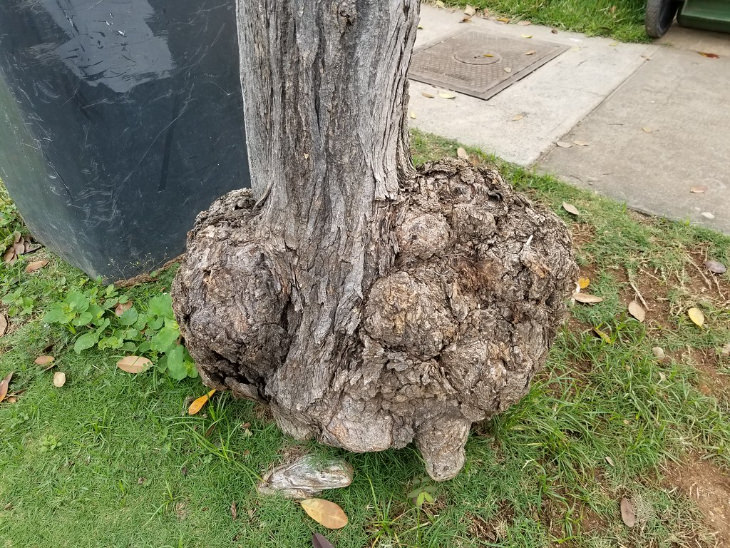 Crown galls/Source
Crown galls/SourceThe vast majority of documented cases of plant cancer have been caused by external pathogens, such as bacteria, viruses, or pests. They can't get cancer from carcinogens like the sun's radiation or air pollution.
There are two common forms of cancer in trees. One causes crown galls and is triggered by the bacterium Agrobacterium tumefaciens. You've probably seen this at least once in your life, it looks somewhat like this:
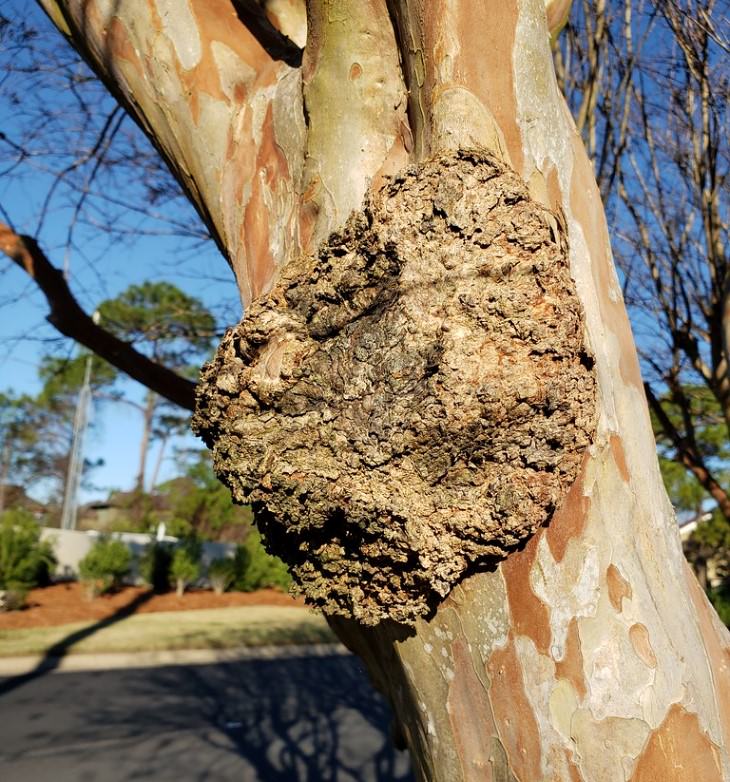 Crown gall on a eucalyptus/Source
Crown gall on a eucalyptus/Source

How Do Wild Animals Survive Winter Without Shelter?
Learn all the genius biological mechanisms animals use to survive winter in the wild - without central heating or warm socks.
 8:42
8:42
Beautiful Nature: The Tadpole Migration
This is the story of one of the greatest migrations, while also being one of the tiniest ones...
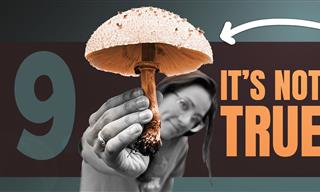 15:39
15:39
9 Myths About Mushrooms BUSTED For Good
Can we eat mushrooms raw or must we cook them first? Do they all have medicinal properties? And how can they help with cancer?
 9:04
9:04
How the Deadliest Parasite Became So Lethal
A fascinating look at an evolutionary jump a micro-organism made from one way of life to become one of the most brutal parasites the world has ever known.
 11:49
11:49
Is It Possible For Humans To Ever Be As Fast As Cheetahs?
The average cheetah can run at a speed of 80 – 130 km/h (50-80 mph)! Why are humans so slow in comparison?
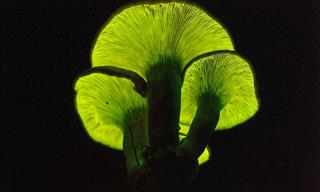
These Rare Mushrooms Can Glow In the Dark
Only about 70 mushroom species out of 14,000 have this beautiful and rare ability.
 19:18
19:18
5 Of the Most Remarkable Adaptations in the Natural World
This video looks at five animals who have some remarkable adaptation abilities for survival in the natural world.
 9:29
9:29
The Tell Tale Signs That Nature is About to Strike
Every natural phenomenon has its signature calling card. Some are almost as strange as the phenomenon itself...

Brighten Up Your Garden with These 7 Beautiful Flowers
Brighten up your garden by adding some of the best and brightest flowers around!

These Pictures Perfectly Capture the Magic of Fall
Enjoy this beautiful collection of fall pictures.

This Collection of Dog Facts Will Definitely Surprise You
If you think you know a lot about dogs, think again. These 16 surprising facts will open your eyes and give you insight into our best friend's world.
 2:24
2:24
This Stunning Bird of Prey Video Will Leave You in Awe!
Be humbled by the extreme beauty of these birds of prey in their natural environment.
 3:22
3:22
This Bird is a Masterful Trickster When It Comes To Feeding
The Drongo bird is one of nature's greatest tricksters. Watch this video to find out how it tricks meerkats into bringing food to it.
 3:13
3:13
Nature Is Amazing: African Wildlife Reveals its Beauty
Join us as we explore the beauty that is African wildlife.

The Japanese Art of Bonsai Makes Miniature Gods of Us!
It has taken a lot of gardening patience for someone to grow these pot sized bonsai beauties, and - boy! - aren't they worth the wait!
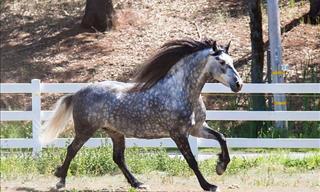
Get Ready For Equestrian Adventures With Beautiful Horses!
Horses are truly majestic wonders of nature that have lived with humans peacefully for thousands of years, just like these beautiful breeds

These Award Winning Photographs Prove Water is Magical
The photography completion themed ‘Water’ is mesmerizing! Let the images take you to beautiful rivers, seas and lakes all around the world.

In Pictures: 2023 BirdLife Australia Photography Awards
Check out the majestic winners of the 2023 BirdLife Australia Photography Awards.
 2:31
2:31
Take Flight With a Wonderfully Crisp Video of the Himalayas
If you ever wanted to see Mt. Everest up close but never had a chance, just sit back and enjoy this amazing video. It's almost like being there in person.

The Icy Reaches of Antarctica Are Breathtakingly Beautiful
Antarctica is a continent completely covered in a thick layer of ice. It is harsh, cold, and majestic.

If You Want to See Some Breathtaking Beauty, Come In Here...
Check out the astonishing winning panoramic images from the 2023 EPSON International Pano Awards.
 8:33
8:33
Just How Clever Are Wild Parrots? See For Yourself!
Just how clever a wild cockatoo parrots? This man created a puzzle with seeds in it to see if they could solve it, and here's the footage...

20 Weird Animal Eating Habits We Never Think About
The natural world can be both a weird and wonderful place, as the facts you are about to learn certainly prove.

This May Be the Most Beautiful Tree in the World
The photos I am about to show you are of Japan’s largest Wisteria plant, also known as Wistaria. It is located in the Ashikaga Flower Park and while it's not the biggest in the world, many people say it is the most impressive.

These Dogs Have the Best Hair Day, Every Day.
I have never seen dogs that look so amazing before. They all have such beautiful coats of hair!

19 Gorgeous Birds You Might Not Have Seen Before
Birds are one of the most varied and beautiful species. These 19 exotic birds are absolutely beautiful!
 13:38
13:38
Family is the Most Important Thing For These Animals
Seeing animals caring for their family members in the wild is one of the most beautiful and inspiring things to watch.

These Adorable Baby Animals Will Make You Smile
These tiny animals can all fit in one hand and are the cutest creatures you will see today.
 2:59
2:59
Animal Kingdom: Meet the World’s Grumpiest Cat
Pallas’s cats are perhaps the most unusual wild cats of our planet.

These 40 Beautiful Birds Were Perfectly Photographed
40 great bird photographs taken in Taiwan by the well-known Taiwanese photographers John and Fish
 8:42
8:42
Beautiful Nature: The Tadpole Migration
This is the story of one of the greatest migrations, while also being one of the tiniest ones...

The World Is Full of Beauty, but These Rivers Top It All
These are 15 of the world's most spectacular rivers. Their beauty will mesmerize you!

12 Beautiful Plants that Flourish in the Summer Heat
many plants are simply unable to grow in the summer heat. but the 12 before you do well in it and can decorate your house all summer long.

A Photo Guide to Beautiful Birds of Prey
A comprehensive photo-guide of common and rare birds of prey.

I Can't Stop Laughing at These Cows Who Think They're Dogs
A cow probably isn't the first thing that springs to mind when thinking of man's best friend, but here are 16 photos which prove that they actually are!

INTERACTIVE: Click to See the English Tide Come and Go...
This interactive photo presentation lets you click on images taken by Michael Marten, and see the English tide coming in and going out.
 6:33
6:33
Graceful Margay: The Elusive Feline of the Rainforest
Meet the Margay, the most arboreal cat in the world.

Marvel at the Stunning Winners of Ocean Art Awards!
Marvel at the spectacular winning images from the 2023 Ocean Art Underwater Photo Contest.
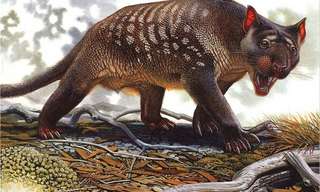
These Creatures Are So Scary You'll Be Happy They're Extinct
Once you read more about these extinct animals - you'll be happy you won't have to see them in real life.
 18:03
18:03
Why and How do Dogs Love Us? An Expert Explains
An amazing study that started modestly but succeeded beyond expectations, revealing fascinating details to scientists about the brain and emotions of dogs.

INTERACTIVE: 26 of the Cutest & Prettiest Animal Posts!
From pandas to bunnies, from tigers to hedgehogs, this interactive collection promises animal lovers a terrific time!

These Pictures Can Reduce Your Stress. We Guarantee It!
Enjoy the beauty of our world in 15 glorious photographs.
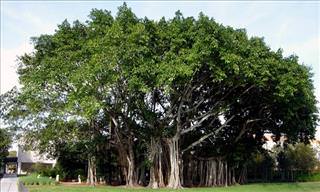
These Ancient Trees Stand Ageless and Beautiful
It's incredible to see these living breathing fossils that have been around for centuries. Take a look at these 10 ancient trees.
 3:27
3:27
Nature in Fast-Forward: 1000 Days of Mushrooms
Showcasing 13 different types of fungi, the video is a mesmerizing journey through the growth and transformation of these incredible organisms.
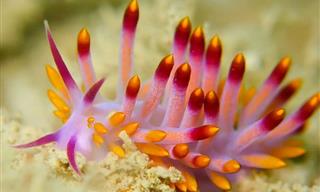
The Ocean’s Floor Is Alive with Colorful Sea Slugs
The ocean is vast and mysterious, populated with alien like colorful creatures. These sea slugs are mesmerizingly beautiful.
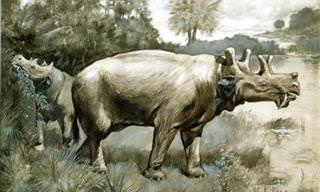
Useless Tusks and Dolphin-Lizards: Oddest Extinct Animals
Strange and unbelievable prehistoric animals. Get familiar with these magnificent ancient dinosaurs that used to roam the planet with their bizarre but fascinating looks.

These Captivating Wildlife Photos Have a Story to Tell
Take a look at some of the most moving photos of this year's wildlife photography, and the winning photos are worth all the attention they can get.


